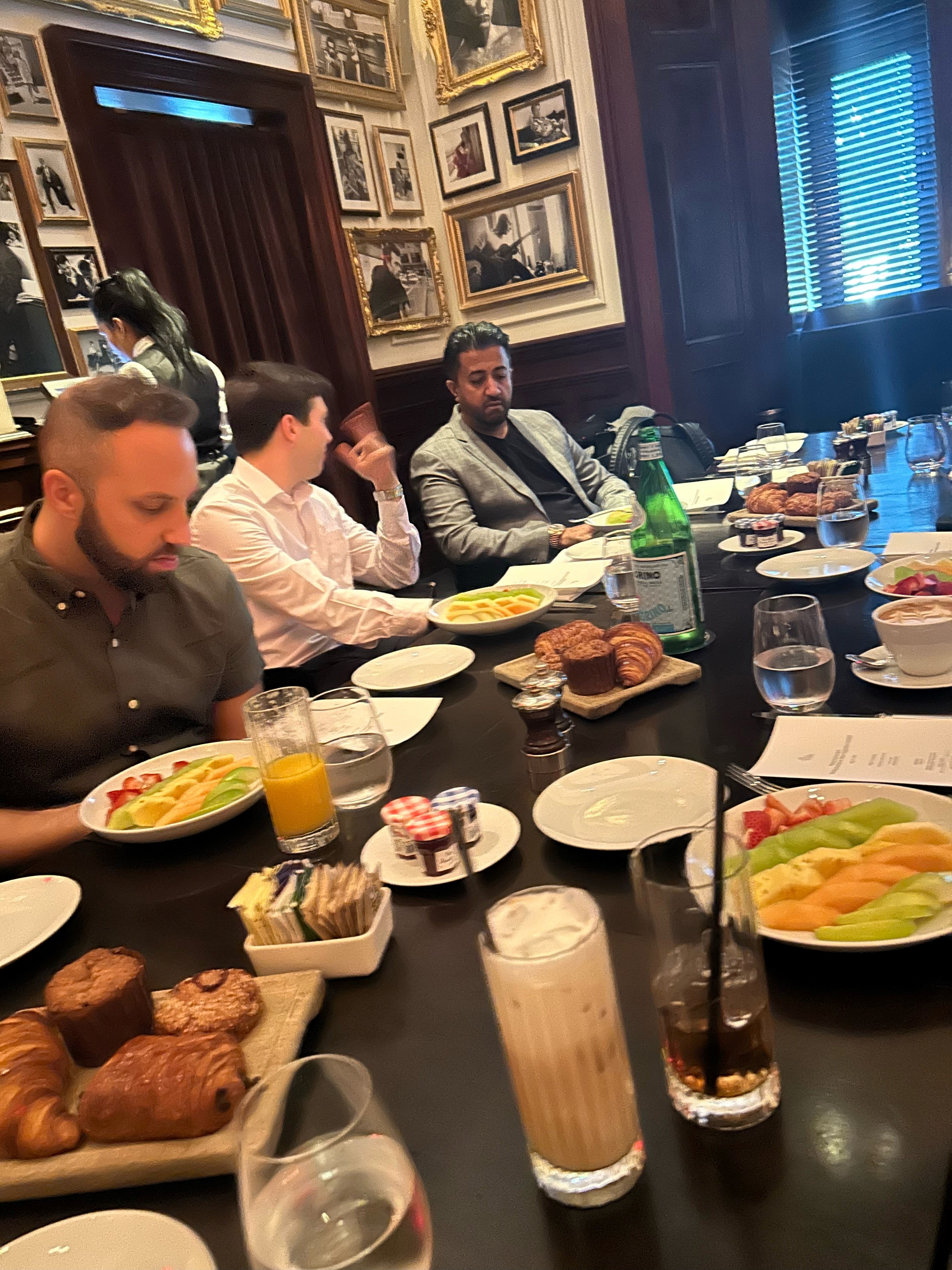We recently had the pleasure of hosting our first TA networking breakfast for our customers within the tech, media, and telecoms spaces. We wanted to take this opportunity to thank all those who attended, share some notes from the discussions, and let everyone know we would be expanding this network and hosting future events, so please do let us know if you would be interested in partaking in any future events.
We set out to discuss a range of topics (but somewhat predictably) one topic dominated the conversation: tech stacks and the use of AI within TA functions.
It was abundantly clear that everyone is using different technologies and in a variety of ways, so it was great to discuss some of these variations and where successes had been found and potential shortcomings too. We also went into some detail about the ethical/legal risks and concerns that come with the space and how different organizations were dealing with these.
The key findings were that:
- Everyone is using chatbots or similar programs to take away administrative responsibilities and shorten processes (especially chatGTP – for things such as writing JDs, adverts, and summarizing information).
- Integrated AI functions and modules are set within ATS’ are becoming much more prevalent, not every organization is comfortable with these being utilized or integrating them.
- Some of our attendees are fully leveraging the usage of their systems and tools to try to reduce costs and make up for smaller TA functions because of cuts. They have AI modules integrated with their ATS, write JDs and adverts, summarize CVs, shortlist profiles, and automate a lot of communications and interactions.)
- A few organizations are highly risk-averse and have legal departments that will not let their people functions use AI tools in any way despite the fact they are successfully leveraging them in other parts of the business. The main concern is there may be further legal consequences further down the line related to DEI matters and other ongoing court cases. Additionally, a lot of these pieces of software require access to substantial amounts of employee and candidate data to be correctly integrated, which is also a major area of concern. There are also concerns about who has access to this data and how it is being used to improve the modules and tools going forward.
- With our breakfast being for companies within the tech, media and telecoms spaces most companies had a very advanced usage of AI in other areas of the business but were reluctant to push for its usage across the HR/ TA functions due to the complexity and ethical concerns being raised across the board.
- All present firmly agreed on the essential role TA plays in ensuring an organization has an outstanding DEI proposition. Across the board, there is a very cautious approach to using tech stacks or AI tools to make decisions that should ultimately be made by humans. The dominant opinion is that in the longer run AI should really be helping reduce the administrative burden TA teams encounter, rather than replacing human decision making.
Tools being used:
- Chat GTP – used across the board for writing JDs, Adverts, summarizing information, etc..
- Integrated AI into the ATS – not used by many of the clients present at the breakfast but all were aware this is commonly used with tools such as Greenhouse or Lever.
- AI Powered Resume screening such as Higher Score, which rates resumes against job descriptions (A/B/C/D), is highly effective for high-volume recruitment as the more you recruit for a specific role the more its level of sophistication and decision making improves. For more complex or niche roles, where it doesn’t have a previous database to work off of – it has proved a lot less effective compared to human evaluators by focusing too narrowly on keywords, leading to suboptimal hiring decisions. There have also been certain roles where in fact the majority of hires were coming from the B/C category of candidates too – once again highlighting the need for it to be correctly calibrated to function.
- LinkedIn integrated tools and insights: most customers using these regularly, apart from the messaging features as these just seem to be really impersonal.
- A range of video software – used to allow recruiters to record / transcribe interviews in real time so they can truly focus on the candidate throughout the process rather than note taking.
- Self-recorded interviews (being used for early stage IVs) – these are being used occasionally, but they do pose issues, beyond just providing a lesser candidate experience – AI falls short in interviewing, especially for neurodivergent candidates, due to its lack of emotional intelligence.
- Chatbots – used to interact with candidates and respond to basic questions – used by a few organizations across the table.
Article by Alyssa Goodwin – Manager – US






